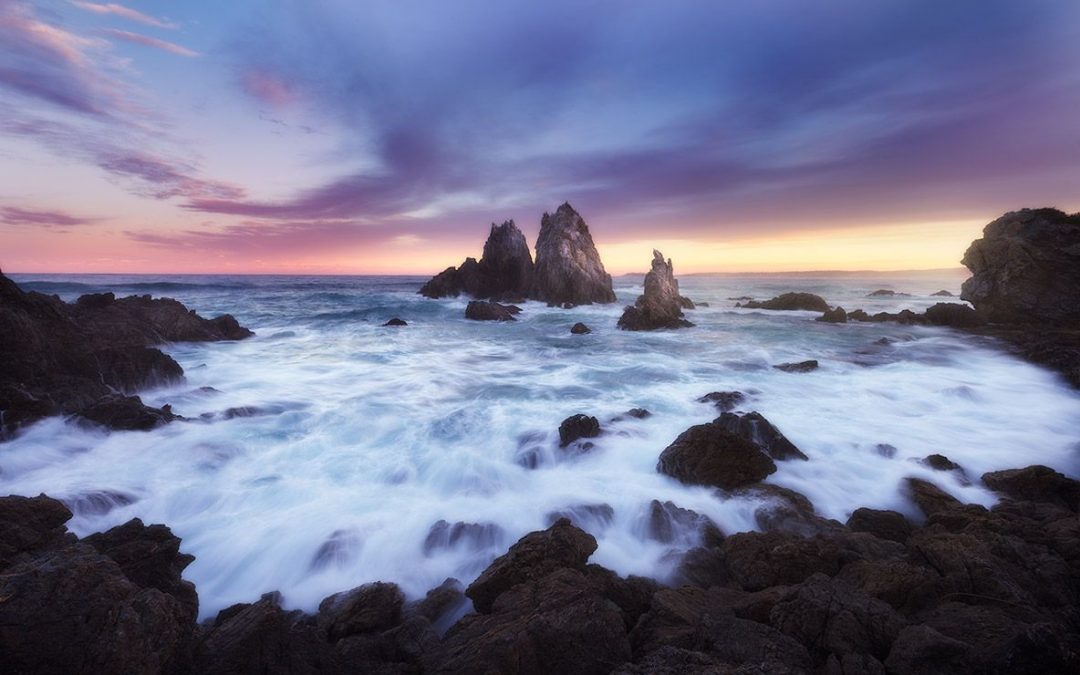Here’s a photo I took of a formation called “camel rock” a while ago.
You might recognise the location from some of my videos because it’s a place I like to visit and shoot as much as I can.
Only thing is it’s a 4+ hour drive from home, so it’s not really “day trip material” especially if you want to get there before sunrise and leave after sunset (to shoot it in the best light).
Viewing it from the beach (off to the right of this shot) it actually looks quite a lot like a camel, but it’s not easy to shoot from that angle. This view is much more popular among photographers but as you can see, looks nothing like a camel!
There’s something about these dark volcanic rock formations that I really enjoy.
The visual contrast between the black rocks and the white water washing over them in a photo is one thing. But to stand among these rocks and try to imagine the millions of years that have passed since they were flowing in their liquid form out of a nearby hole in the ground really puts everything into perspective for me.
It’s the same kind of feeling I have looking up at the stars at night. Privileged that I was born into a time when we have the capacity to even comprehend our place in the universe and appreciate what’s around us.
This is a big part of what I enjoy about photographing landscapes.
Just being out there.
And then of course there’s the whole “making a good photo” thing, which is also great fun!
I accidentally gave myself a bit of a challenge taking this shot.
I’d been using my Canon 17-40 lens for a few years, but before this trip I invested in a 16-35mm f2.8
What I completely forgot to consider until I tried screwing the filter ring (for my 6-stop ND filter) onto my new lens, was that my existing filter kit wasn’t going to fit on it!
And what this meant on this particular afternoon was that there was a very small window of time when the light would be low enough to use a long exposure for the water, whilst at the same time retaining that nice sunset colour in the sky (no running around grabbing a bunch of different compositions for me!).
So when that ideal window arrived I fired off a series of shots, one for each wave that rolled in until the light faded out. I had about 5 minutes in total and this was the pick of the bunch.
It’s surprising how different two shots taken seconds apart can look when the water is rolling in like this. It’s why I just keep shooting even after I think I’ve got “the winner”.
I think part of taking a good seascape is to sit and watch what the water is going for a good 10-15 minutes beforehand. Not only is it a good idea for safety reasons, but it also helps to know where the waves are going to land.
Position yourself too far back and the waves won’t fill enough of the foreground. Too far forwards and you could get clobbered by that big set that comes in every once in a while!
To master the workflow and processing techniques I used to transform the RAW file into what you see at the top of this email, click here now.
Steve


